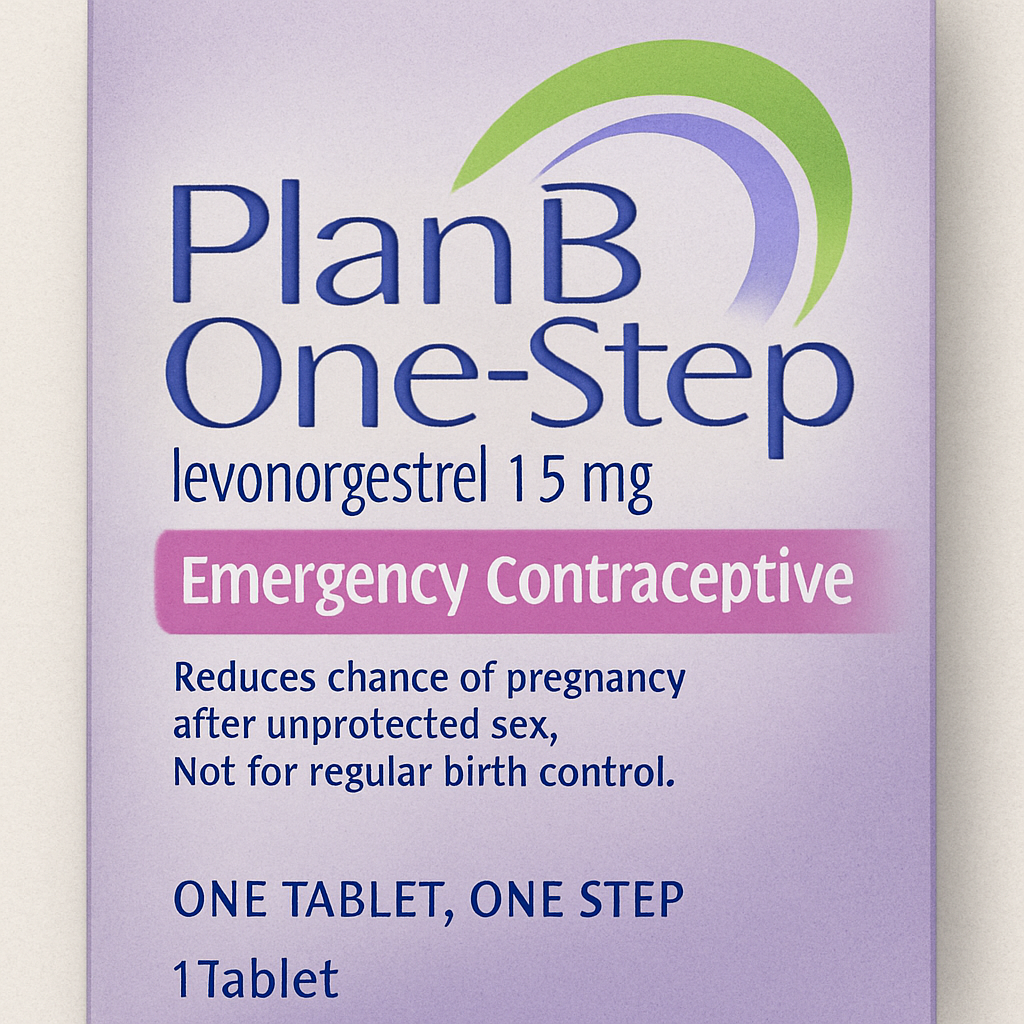In today’s world, understanding your contraceptive options is essential for making informed choices about reproductive health. With the myriad of options available, choosing the right one can be daunting. Among these options, Plan B, often referred to as the “morning-after pill,” stands out due to its accessibility and effectiveness. This article delves into the effectiveness timeline of Plan B, outlines the critical window for taking it, and discusses other important aspects of this emergency contraception. By understanding these nuances, individuals can better navigate their reproductive health decisions.

What is Plan B?
Plan B is a form of emergency contraception intended to prevent pregnancy after unprotected sex or contraceptive failure, such as a broken condom. This option becomes particularly crucial in unexpected situations where traditional contraceptive methods fail. Understanding the mechanism and purpose of Plan B can aid in its effective use.
Composition and Mechanism
Plan B contains levonorgestrel, a hormone found in many birth control pills but at a higher dose. This hormone mimics the action of the natural hormone progesterone. Its primary function is to stop the release of an egg from the ovary, a process known as ovulation. Without ovulation, there is no egg for sperm to fertilize, thus preventing pregnancy.
Additional Functions
Besides inhibiting ovulation, Plan B may also prevent fertilization or the attachment of a fertilized egg to the uterus. By altering the uterine lining, it creates an environment that is less conducive to the implantation of a fertilized egg. However, it is important to emphasize that Plan B is not an abortion pill and will not affect an existing pregnancy. Once implantation occurs, Plan B is ineffective.
Availability and Accessibility
Plan B is widely available over-the-counter at pharmacies and does not require a prescription. Its accessibility makes it a convenient option for many seeking immediate emergency contraception. However, despite its over-the-counter status, it is crucial for individuals to understand how and when to use it for maximum effectiveness.
The Plan B Window: When to Take It
Timing is crucial when it comes to the effectiveness of Plan B. The window of opportunity for taking Plan B is limited, and understanding this timeline is essential for its success in preventing pregnancy.
The 24-Hour Advantage
The 72-hour window for taking Plan B is well-documented, but the first 24 hours present the highest efficacy. Taking Plan B as soon as possible after unprotected intercourse greatly increases its effectiveness. During this period, the effectiveness rate is approximately 95%, making it the most reliable time frame for use.
24 to 48 Hours Post-Intercourse
As time progresses, the effectiveness of Plan B begins to decline. Between 24 to 48 hours after unprotected sex, the effectiveness decreases slightly but remains relatively high, around 85%. This period still offers a substantial chance of preventing pregnancy, emphasizing the importance of prompt action.
The Final 48 to 72 Hours
In the 48 to 72-hour window, Plan B’s effectiveness continues to drop, reaching around 58%. While still offering some level of protection, it underscores the critical nature of taking the pill as soon as possible. Beyond this timeframe, alternative emergency contraceptive options should be considered for those seeking additional protection.

Plan B Effectiveness Timeline
Understanding the effectiveness timeline of Plan B can help individuals make informed decisions about its use. This knowledge is crucial in assessing the risk of pregnancy and considering alternative options if needed.
Effectiveness Beyond 72 Hours
Although Plan B is designed for use within 72 hours, some studies suggest it may still offer some level of protection up to 120 hours (5 days) after unprotected sex. However, its effectiveness significantly decreases beyond the 72-hour mark, and it should not be relied upon as the primary method of emergency contraception during this extended period.
Alternative Emergency Contraception
For those who have missed the 72-hour window, other forms of emergency contraception should be considered. The copper intrauterine device (IUD) is one such option, offering a highly effective method of preventing pregnancy when inserted up to 5 days after unprotected intercourse. Consulting with a healthcare provider can help determine the best course of action.
Importance of Early Intervention
The sooner Plan B is taken, the more effective it is in preventing pregnancy. This principle underscores the importance of being prepared and having access to Plan B or alternative contraceptive methods. Individuals should educate themselves on the available options to make timely and informed decisions.
Factors Affecting Plan B’s Effectiveness
Several factors can influence the effectiveness of Plan B. Understanding these factors can help individuals assess their risk and seek alternative methods if necessary.
Weight and BMI Considerations
Research suggests that Plan B may be less effective for individuals with a higher body mass index (BMI). In such cases, consulting a healthcare provider about alternative emergency contraceptive options, such as Ella or the copper IUD, may be beneficial. These alternatives may offer more reliable protection for individuals with higher BMI.
Timing of Ovulation
If ovulation has already occurred, Plan B is less likely to prevent pregnancy. This is because its primary function is to delay ovulation. Understanding one’s menstrual cycle and timing of ovulation can provide valuable insight into the likelihood of Plan B’s effectiveness.
Drug Interactions
Certain medications and herbal supplements can reduce the effectiveness of Plan B. These include some anticonvulsants, antibiotics, and St. John’s Wort. Always consult with a healthcare provider if you’re unsure about potential interactions. Being aware of these interactions can help ensure the maximum effectiveness of Plan B.
Other Emergency Contraceptive Options
While Plan B is a popular choice, it’s important to be aware of other emergency contraceptive options that may be more suitable depending on individual circumstances. These options provide alternative solutions for those seeking emergency contraception.
Ella (Ulipristal Acetate)
Ella is another form of emergency contraception that requires a prescription. It is effective up to 120 hours (5 days) after unprotected sex and may be more effective than Plan B for individuals with a higher BMI. Ella works by delaying ovulation and can be taken at any time during the menstrual cycle.
Prescription Requirement
Unlike Plan B, Ella requires a prescription, which may be a barrier for some individuals. However, its increased effectiveness for those with higher BMI makes it a valuable option. Planning ahead and consulting with a healthcare provider can facilitate access to this medication when needed.
Comparison with Plan B
Ella and Plan B both serve as emergency contraceptive options, but their mechanisms and effectiveness differ. Understanding these differences can help individuals make informed decisions based on their unique circumstances and needs.
Copper IUD
The copper IUD is the most effective form of emergency contraception. It can be inserted by a healthcare provider up to 5 days after unprotected sex and can also serve as ongoing birth control for up to 10 years. The copper in the IUD creates an environment that is toxic to sperm, preventing fertilization.
Dual Functionality
The copper IUD serves as both emergency contraception and long-term birth control. Its dual functionality makes it a highly attractive option for those seeking a reliable contraceptive method. Consulting with a healthcare provider can help individuals determine if the copper IUD is the right choice for their needs.
Considerations for Insertion
While highly effective, the insertion of a copper IUD requires a healthcare provider, which may pose an accessibility challenge for some. Understanding the procedure and potential side effects can help individuals weigh the benefits and drawbacks of this option.

by Steve Johnson (https://unsplash.com/@steve_j)
When to Consult a Healthcare Provider
Consulting a healthcare provider is advisable in the following situations, as professional guidance can provide clarity and reassurance.
Evaluating Emergency Contraception Options
If you have questions about which emergency contraception is right for you, a healthcare provider can offer personalized recommendations. They can assess individual circumstances and provide guidance on the most suitable options.
Addressing Side Effects
If you experience severe side effects after taking Plan B, consulting a healthcare provider is essential. They can evaluate symptoms and provide appropriate care to address any adverse reactions.
Assessing Potential Pregnancy
If your period is more than a week late after taking Plan B, this could indicate a potential pregnancy. Consulting a healthcare provider can help determine the cause and discuss next steps.
Effectiveness Concerns
If you have a higher BMI and are concerned about Plan B’s effectiveness, a healthcare provider can discuss alternative options and ensure adequate protection.
Conclusion
Plan B is a vital option for those seeking emergency contraception after unprotected sex or contraceptive failure. Understanding the effectiveness timeline and the importance of taking it as soon as possible can help maximize its efficacy. Additionally, being informed about other emergency contraceptive options can empower individuals to make the best choices for their reproductive health.
Always consider consulting with a healthcare provider to discuss your options and any concerns you might have. By being proactive and informed, you can make the best decisions for your reproductive health. Taking charge of your reproductive choices ensures you are prepared and equipped to navigate unexpected situations confidently.

